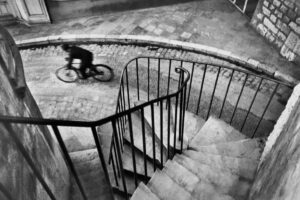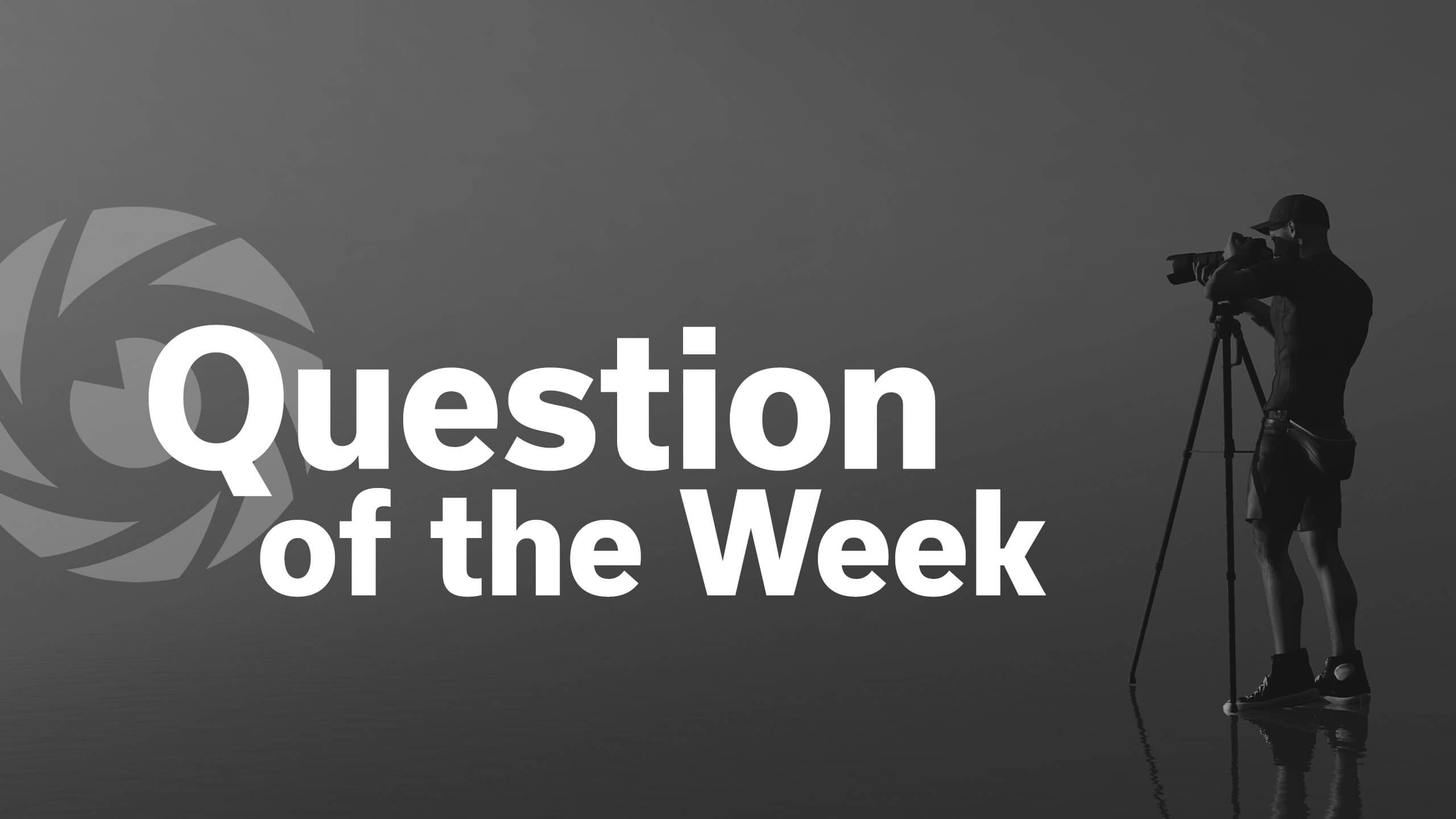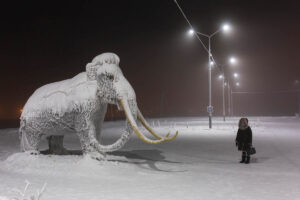Introduction
 Laowa FF II TS 55mm f/2.8 1X Macro on Nikon Z7II
Laowa FF II TS 55mm f/2.8 1X Macro on Nikon Z7IIThe Laowa FF II TS 55mm and 100mm f/2.8 Macro 1X lenses are true macro lenses, offering 1:1 magnification along with tilt-shift functionality that enhances control over the focal plane.
While major camera and lens manufacturers like Canon, Sony, Nikon, Leica, Panasonic, Hasselblad, Sigma, and Tamron have largely overlooked this niche in mirrorless cameras, Laowa has stepped up to fill the gap. Their lenses, available in almost all major mounts, feature tilt and shift capabilities that open up new creative possibilities for photographers.
The tilt function allows precise control over the focal plane, enabling photographers to either extend or limit the in-focus area. This makes these lenses perfect for capturing intricate product details or adding selective focus for artistic compositions. With such versatility, Laowa’s lenses offer greater creative control over depth of field, making them a valuable tool for specialised photography needs
Since these two lenses are almost identical in shape, build, and handling, and were released simultaneously, I decided to combine my review of both. This way, I can avoid repeating the same points and provide a direct comparison, so you can see them side by side.
![]() I tested these lenses on a 46 Mp Nikon Z7ii (Sample images were taken with a Nikon Zf)
I tested these lenses on a 46 Mp Nikon Z7ii (Sample images were taken with a Nikon Zf)
 You can see this review as a YouTube video here!
You can see this review as a YouTube video here!
![]() Sample images in higher resolution here
Sample images in higher resolution here
Sample Images
 Nikon Zf | Laowa FF II TS 100mm f/2.8 1X Macro | f/11
Nikon Zf | Laowa FF II TS 100mm f/2.8 1X Macro | f/11 Nikon Zf | Laowa FF II TS 55mm f/2.8 1X Macro | f/5.6 (Shift panorama)
Nikon Zf | Laowa FF II TS 55mm f/2.8 1X Macro | f/5.6 (Shift panorama) Nikon Zf | Laowa FF II TS 55mm f/2.8 1X Macro | f/2.8 | Tilted
Nikon Zf | Laowa FF II TS 55mm f/2.8 1X Macro | f/2.8 | Tilted Nikon Zf | Laowa FF II TS 55mm f/2.8 1X Macro | f/2.8 No Tilt
Nikon Zf | Laowa FF II TS 55mm f/2.8 1X Macro | f/2.8 No Tilt Nikon Zf | Laowa FF II TS 100mm f/2.8 1X Macro | f/2.8 | Tilted
Nikon Zf | Laowa FF II TS 100mm f/2.8 1X Macro | f/2.8 | Tilted Nikon Zf | Laowa FF II TS 55mm f/2.8 1X Macro | f/5.6 (Shift panorama)
Nikon Zf | Laowa FF II TS 55mm f/2.8 1X Macro | f/5.6 (Shift panorama) Nikon Zf | Laowa FF II TS 100mm f/2.8 1X Macro | f/2.8 | Tilted
Nikon Zf | Laowa FF II TS 100mm f/2.8 1X Macro | f/2.8 | Tilted Nikon Z7II | Laowa FF II TS 100mm f/2.8 1X Macro | f/16 (1:1)
Nikon Z7II | Laowa FF II TS 100mm f/2.8 1X Macro | f/16 (1:1) Nikon Zf | Laowa FF II TS 55mm f/2.8 1X Macro | f/2.8 Tilted
Nikon Zf | Laowa FF II TS 55mm f/2.8 1X Macro | f/2.8 TiltedSpecifications
| Focal Length | 55mm | 100mm |
| Angle of View | 62.7° | 37° |
| # of Aperture Blades | 15 | |
| Max Aperture | f/2.8 | |
| Min Aperture | f/22 | |
| Min Focus/Working Distance | 27 cm / 8.3 cm | 32 cm / 14 cm |
| Filter Size | 77 mm | |
| Amount of Shift | ± 12 mm | |
| Angle of Tilt | 10° | |
| Mount | Sony E / Canon RF / Nikon Z / L / Fujifilm GFX / Hasselblad XCD | |
| Weight | 1495 g * | 1355 g * |
| Size (D x L) | 91 x 184 mm * | 91 x 179 mm * |
| Elements/Group | 14 / 11 | 13 / 10 |
* Nikon Z version, without rear/front cap
 Laowa FF II TS 55mm f/2.8 1X Macro | Lens construction
Laowa FF II TS 55mm f/2.8 1X Macro | Lens construction Laowa FF II TS 100mm f/2.8 1X Macro | Lens construction
Laowa FF II TS 100mm f/2.8 1X Macro | Lens constructionBuy new:
55mm: Laowa Store, Amazon (anywhere) $1250 (Affiliate link)
100mm: Laowa Store, Amazon (anywhere) $1250 (Affiliate link)
Disclosure
Laowa kindly loaned these two lenses for testing and review over the course of a few weeks.
Handling and Build Quality
As mentioned earlier, the two recently released lenses, the 55mm and 100mm, are very similar in shape, controls, and handling. The table in the Specifications section outlines all the physical and some optical similarities and differences. Everything mentioned here applies to both lenses, unless stated otherwise. Below are a few pictures of the two lenses side by side.
Common Features
The first thing that strikes you is these lenses size and weight. They are huge and heavy. The 55mm lens weighs almost 1.5 kg, without caps. Just recently, I reviewed Nikon Z 50mm f/1.2 and thought it was very big. Look at the size comparison below!
 TTArtisan 100mm T/S Macro 2X, Laowa FF II TS 55mm f/2.8 1X Macro, Nikon Z 50mm f/1.2 S
TTArtisan 100mm T/S Macro 2X, Laowa FF II TS 55mm f/2.8 1X Macro, Nikon Z 50mm f/1.2 SThe lenses are built of metal and glass, including the lens barrel, control rings, knobs, levers, mount plate, and fixed lens hoods, all of which are metallic. The lenses come with a standard rear cap and hard plastic clip-on front caps. The lenses look and feel to be build solidly. All markings are engraved and filled with paint. There are no electronic contacts for aperture control or EXIF data transfer. The lenses feature a floating lens element mechanism with internal focusing, which means the lens length remains constant and the front element does not rotate when adjusting the focus distance. The large metallic focusing ring, which rotates about 155°, is dampened and turns easily—perhaps a little too easily, which makes precise focusing somewhat difficult. It would be better if it were a little stiffer. The focusing rings, in addition to the standard feet and meter markings, also feature magnification markings: 1:4, 1:2, 0.75:1, and 1:1 on the 55mm lens, and 0.5:1, 0.75:1, and 1:1 on the 100mm lens. Additionally, there is a depth-of-field marking on the barrel next to the focusing ring.
 Laowa FF II TS 55mm/100mm f/2.8 1X Macro aperture and distance markings
Laowa FF II TS 55mm/100mm f/2.8 1X Macro aperture and distance markingsOne detail that caught my attention is the inconsistency in magnification markings: one lens uses 1:2 to indicate 0.5X magnification, while the other uses 0.5:1. ‘Same, same but different.’ Additionally, one lens has an extra 1:4 marking, while the other does not—why the inconsistency?
The aperture ring turns smoothly and has click stops at every full stop, with a gentle click. While the aperture ring only clicks at full stops, you can set the aperture value between two stops. The aperture values are spaced with varying distances on the ring.
 Tripod foot/collar with Arca-Swiss quick release plate
Tripod foot/collar with Arca-Swiss quick release plateEach lens includes an Arca-Swiss compatible foot plate, attached to a collar support by two screws, which in turn is secured to the lens collar by two additional screws on either side. This setup is intended to stabilise the heavy lens-camera assembly on a tripod.
 Arca-Swiss plate, collar support and collar (on the lens) | Laowa FF II TS 55mm f/2.8 Macro 1X
Arca-Swiss plate, collar support and collar (on the lens) | Laowa FF II TS 55mm f/2.8 Macro 1XLaowa’s choice of this unconventional three-part collar-foot design, rather than a traditional one-piece setup, is puzzling, as it lacks rigidity. The narrow connection surface between the collar and its support increases susceptibility to camera shake. Additionally, the screws can loosen easily—whether those connecting the foot to the collar support or those securing the support to the collar—further destabilising the lens-camera setup. Maintaining the 100mm lens shake-free at 1:1 magnification is a real challenge, especially given its substantial weight. When the nearly 2.5 kg lens-camera setup is mounted with the lens pointing downward, the mechanical leverage, combined with the weak and unstable tripod foot on the lens, significantly increases the risk of vibration.When using this setup on a tripod. It’s advisable to use a shutter release cable or set a 5-second shutter delay to minimise camera shake.
Tilt/Shift Features
In this department these Laowa lenses excels as they are the most versatile tilt-shift lenses available.
You can shift the lens up to 12mm in each direction and tilt it up to 10° in both directions. Separate knobs control the tilt and shift functions, and additional knobs on the opposite side of the lens allow you to lock these adjustments in place. However, the shift control knob could be a bit larger and more grip-friendly, as adjusting the shift is not very easy. Most of the time, I had to help by pushing the lens into the shifted position
While these features may seem standard for a tilt-shift (T/S) lens, these lenses offer one of the highest tilt and shift ranges available for full-frame lenses. To my knowledge, only two other T/S lenses provide this much tilt and shift capability.
You can rotate the lens 360° in 15° increments, enabling the same movements in any direction you desire. This is an impressive feature, as most other lenses typically allow rotation of only 90° to 180° in one direction and, at best, 90° in the opposite direction, often in 30° increments.
You can rotate either the tilt mechanism or the shift mechanism independently by 90°, without any click stops. This allows you to tilt and shift independently, aligning them in the same direction, perpendicular to each other, or at any angle in between.
In addition to that you can also rotate the complete camera-lens setup via the lens collar on the tripod foot 360°, which also can be locked with a separate knob.
You can tilt and shift the lens in almost any direction, regardless of the camera’s orientation. This flexibility, combined with various rotation options, opens up endless creative possibilities.
Advantage of Tripod Collar in Shift Panorama
As far as I know, these two Laowa lenses are the only T/S lenses with a tripod foot/Collar, which offers several advantages. It not only helps balance the camera and lens on a tripod but also enhances tilt-shift functionality when creating panoramas with elements both near and far from the camera. Here’s how:
With standard T/S lenses, you mount the camera on a tripod, shift the lens in various directions, take a shot at each position, and then stitch the images together in post. For standard horizontal panoramas, you shift only left and right. With these Laowa lenses, this method produces images in a 2.5:1 format, which is very close to the original CinemaScope ratio. Additionally, you can shift in all directions, as shown in the animation below:
 Animation 1. Camera fixed, shift moves the lens around
Animation 1. Camera fixed, shift moves the lens aroundThis creates a much larger, high-resolution image. This technique not only mimics the effects achievable with medium cameras but also increases the angle of view, allowing you to capture much more than a single shot with the lens in use. Here’s an example.
This technique works well as long as there is nothing close to the camera. However, in product photography, objects are often positioned near the lens. The issue with this process is that shifting the lens also moves the entrance pupil, causing parallax errors in the images—an inconsistency that is difficult to correct in post-processing. Here’s a simple example.
The original plan was for the top of the Eiffel Tower to align perfectly beneath the base of the glass sculpture, as seen when the photo is taken without any shift. However, shifting the lens to the right or left alters this alignment due to parallax, resulting in a panorama that doesn’t match the intended composition. This misalignment occurs regardless of the direction in which you shift the lens, but, for simplicity, I am demonstrating it only in horizontal directions. On the other hand, when the lens is mounted on a tripod using its tripod foot, the combination of collar rotation, as illustrated in the animation below, the shift movements yields a different result.
 Animation 2. Lens fixed, shift moves the camera around
Animation 2. Lens fixed, shift moves the camera aroundThis ensures that the lens and its entrance pupil remain in the exact same position, preventing any parallax. Below you can see the same scene as shown above but with the lens fixed via the tripod foot as shown in Animation 2:
As you can see, the alignment remains intact regardless of shifting, and the final panorama maintains the intended composition.
Optical Features
 55mm F2.8 TS MTF Chart
55mm F2.8 TS MTF Chart 100mm f/2.8 TS MTF Chart
100mm f/2.8 TS MTF ChartThese are impressive curves, though they represent performance only in the centred position, focusing on the central areas of the lens’s coverage. Nevertheless, they suggest spectacular sharpness and contrast, with minimal aberrations across most of the frame. Even the corners exhibit very good performance. The curves suggest that the 100mm lens theoretically offers the best sharpness and contrast. Let’s see how this translates to real-world use.
Sharpness (Infinity)
For the infinity sharpness test, we typically examine three areas of the image: the center, mid-frame, and corners (see the highlighted areas in the image below). However, as this is a shift lens, this lens can cover a significantly larger image circle. Shifting creates new corners that are positioned farther from the center compared to the corner of a standard lens. On full-frame cameras, we will also assess sharpness in the shifted corners at maximum shift.

Both lenses are very sharp when used normally.
The 55mm lens has excellent sharpness in the centre and midframe from wide open at f/2.8 and very good sharpness in the corner. If shifted all the way, the shifted corner is a little soft but usable. Stopping down makes thing even better in the corner. At f/5.6 the shifted corner starts show good reasonable sharpness and it becomes good at f/8. At f/11 the sharpness is very good even in the shifted corner. F/5.6-f/8 seems to be the peak of the sharpness for centre and midframe, f/8 for the corner and f/16 for the shifted corner.
Looking at the 100mm TS, the sharpness across the frame is even better. Corner is already very good wide open at f/2.8 and the shifted corner is also good. For this lens, while stopping down improves the sharpness, the improvement is not that much and you have the same excellent and very good sharpness even stopped down. Even with this lens the best sharpness is seen at f/5.6-f/8 for centre and midframe, and f/11 for the corner and the shifted corner.
Note that these lenses are compatible with medium-format camera systems like the Fujifilm GFX and Hasselblad XCD. Due to the shift mechanism, it can extend coverage even beyond that of a typical medium-format sensor.
Sharpness (Portrait)
Let’s look at the points of interest for portraits at the portrait distance: the very centre, the centre’s inner periphery (1/3 rule intersection), and the centre’s outer periphery (1/4th intersection).
 Portrait Sharpness Points of Interest
Portrait Sharpness Points of InterestExcellent sharpness and contrast shown by both lenses. The 100mm lens is the sharper one of the two. The 55mm gets sharper by stopping down to f/4 but the 100mm is still sharper.
Sharpness (Close-up)
The same story here, the 55mm close-up sharpness is excellent from f2.8 but it becomes better at f4. The sharpness remains excellent without any drastic change until f16, where it becomes just a little less sharp and even less sharp at f22, but still very sharp.
Once again, the 100mm lens demonstrates even better sharpness starting at f/2.8, with performance improving up to its peak at f/8.
Lens Distortion
The distortion is well-controlled overall. However, there is slight barrel distortion in the 55mm image and slight pincushion distortion in the 100mm image, both of which are negligible.
Vignetting
Because these are shift lenses, they cover much larger image circles than a typical full-frame lens. We measure light fall-off both when the lenses are centred (like a standard lens) and when they are shifted, allowing us to evaluate a much larger circle that places the corners farther from the centre.
In centred positions we have excellent vignetting control and values. This is because we are looking at the central part of the actual lens coverage.
| F/2.8 | 1.3 EV | 0.4 EV |
| F/4 | 0.6 EV | 0.3 EV |
| F/5.6 | 0.4 EV | 0.2 EV |
| F/8 | 0.4 EV | 0.2 EV |
When shifted we get completely different values. Note that, when the lenses are shifted, the lens centres are no longer in the centre of the image—they move closer to the edge in the opposite direction of the shift. In the image for 55mm at f/2.8 Shifted below, I’ve marked the actual lens centre with an “x”, and the light fall-off for the shifted positions are measured from this point.
| F/2.8 | 3 EV | 2.1 EV |
| F/4 | 2.3 EV | 1.9 EV |
| F/5.6 | 1.8 EV | 1.6 EV |
| F/8 | 1.7 EV | 1.4 EV |
Focus Shift & Aberrations
No focus shift to worry about is visible. The longitudinal chromatic aberrations are very well controlled as almost none of that is visible either.


A small but negligible amount of lateral chromatic aberration is visible in the corners of the images when magnified to 100%. Otherwise, performance in this area is excellent. The following images are all cropped to 100%.
Flare Resistance
Fortunately, the likelihood of including the sun in images taken with these lenses is minimal, particularly for typical applications such as product, food, or indoor creative portrait photography. However, the lenses’ flare resistance leaves something to be desired. If, against all odds, you use them for outdoor portraits or wedding photography, exercise caution with the sun’s position. Having it in or near the frame can result in significant lens flare.
Bokeh
Macro lenses are known for their smooth background blur and pleasing bokeh. These two Laowa lenses offer up to 1:1 magnification, which can render bokeh highlights so large that a single specular highlight can fill the entire frame. However, for this bokeh evaluation, I avoided such extreme close-ups, as they would not provide meaningful results. Additionally, since the 100mm lens has nearly double the focal length of the 55mm, I tested its bokeh at roughly twice the subject distance.
Examining the bokeh highlights, I found no traces of onion rings. The highlights are evenly lit, with no hard or colored edges. The 15-blade aperture design maintains a near-perfect circular shape for the bokeh balls, even when stopped down to f/11, which is impressive.
I tested the lenses’ background blur at various distances to see how they perform in practice. For the 55mm lens, I used subject distances of 0.25, 0.5, 0.75, 1, and 1.25 meters. With the 100mm lens, I tested at slightly longer distances: 0.5, 1, 1.5, and 2 meters. To evaluate the background blur, I placed objects behind the subject— the Eiffel Tower—at regular intervals of 25 cm (25, 50, 75 cm, and so on). I tested the lenses at both f:72.8 and f/5.6.
Generally, getting a pleasing background blur is not difficult with any of these lenses, even with smaller apertures. Even at longer distances you will get soft background blur.
Conclusion
| I LIKE | AVERAGE | I DON’T LIKE |
| shift/tilt versatility Sharpness Vignetting (un-shifted positions) Lens distortion Chromatic aberrations Tilt-Shift features and flexibility Build quality Price Tripod collar/foot Bokeh |
Vignetting (shifted positions) | Size/Weight Flare resistance Tripod foot design |
These are two sharp and versatile tilt/shift lenses with excellent optical performance and build quality. They rank among the best options for product, food, and creative portrait or wedding photography, offered at a very competitive price for their specifications.
As noted in the table above, the main drawbacks are their flare resistance and weight/size. However, these issues are unlikely to affect their typical applications, as the lenses are primarily intended for studio use—where the sun isn’t a concern, and prolonged carrying is unnecessary.
While the tripod mount is listed as a weak point, it’s important to note that no other tilt/shift lens includes one, making it a bonus feature, even if it’s not as refined as the rest of the lens.
Overall, these lenses are nearly perfect choices for professional product, food, and wedding photographers. In terms of optical quality, they are second to none among tilt/shift options (except flare resistance), yet they remain significantly more affordable than many equivalent or even inferior lenses in this category.
In terms of comparison, your primary deciding factor should be focal length, as both lenses are nearly equally outstanding. That said, while both offer top-notch build and optical quality, the 100mm lens has a slight edge, with sharper corners—especially in a shifted position—and less vignetting.
If you’re seeking a professional tilt/shift lens and don’t mind the weight, these are highly recommended.
Writing articles like this one is both time-consuming and costs us a lot of money. If you found this article helpful and decided to buy one of these lenses, please consider using one of the affiliate links.
If you are not interested in buying any of the lenses, but you still found this article useful, interesting, or it saved you a lot of money, treat us to a coffee (donate)!
Buy new:
55mm: Laowa Store, Amazon (anywhere) $1250 (Affiliate link)
100mm: Laowa Store, Amazon (anywhere) $1250 (Affiliate link)
Alternatives
Here I list a couple of alternatives, while there are many more, I try to list only some of ones with equivalent focal lengths.
Nikon PC-E Micro-Nikkor 85mm 2.8D N
It has a 8.5° tilt and 11.5 mm shift and can only do tilt and shift orthogonal to each other
Buy New: Amazon (anywhere) $ (Affiliate link)
Buy Used: eBay $780(Affiliate link)
Nikon PC-E Nikkor 45mm 2.8D ED N
It has a 8.5° tilt and 11.5mm shift and can only do tilt and shift orthogonal to each other
Buy New: Amazon (anywhere) $ (Affiliate link)
Buy Used: eBay $899 (Affiliate link)
Canon TS-E 90mm 2.8L Macro
This is the only lens that has a focal length closest to the Laowa 100 and can do almost all the movements, rotation in 30 degrees increment only though and no tripod foot/collar and can do 10° tilt and 12 mm shift as the reviewed lenses.
Buy New: Amazon (anywhere) $2199 (Affiliate link)
Buy Used: eBay $2000 (Affiliate link)
Canon TS-E 90mm 2.8
EF Mount Series 1 (Tilt and Shift orthogonal or in same direction buy on, this one can do only 8° tilt and 11 mm shift
Buy New: Amazon (anywhere) $1399 (Affiliate link)
Buy Used: eBay $539 (Affiliate link)
Canon TS-E 50mm 2.8L Macro
EF Mount Series 2 (Tilt and Shift in any combination), can do almost all the movements as the Laowa lenses. Rotation in 30 degrees increment only though and no tripod foot/collar. Can do only 8.5° tilt but 12 mm shift
Buy New: Amazon (anywhere) $ (Affiliate link)
Buy Used: eBay $ (Affiliate link)
TTArtisan 100mm 2.8 T/S Macro 2X
The only alternative that has 2X magnification macro. Great sharpness. The tilt/shift is not as versatile and no foot/collar. This lens seems to be discontinued but you can get a used one at an affordable price or even new ones on some stores that still have them in stock.
Buy New: Amazon (anywhere) $419, or eBay $283 (Affiliate link)
TTArtisan 50mm 1.4 Tilt
A tilt only lens, very affordable
Buy New: Amazon (anywhere) $229 (Affiliate link)
Buy Used: eBay $178 (Affiliate link)
More Sample Images
 Nikon Zf | Laowa FF II TS 100mm f/2.8 1X Macro | f/2.8 | Tilted
Nikon Zf | Laowa FF II TS 100mm f/2.8 1X Macro | f/2.8 | Tilted Nikon Zf | Laowa FF II TS 100mm f/2.8 1X Macro | f/8 (Shift panorama)
Nikon Zf | Laowa FF II TS 100mm f/2.8 1X Macro | f/8 (Shift panorama) Nikon Z7II | Laowa FF II TS 100mm f/2.8 1X Macro | f/2.8 | Shifted
Nikon Z7II | Laowa FF II TS 100mm f/2.8 1X Macro | f/2.8 | Shifted Nikon Zf | Laowa FF II TS 55mm f/2.8 1X Macro | f/2.8 | Tilted
Nikon Zf | Laowa FF II TS 55mm f/2.8 1X Macro | f/2.8 | Tilted Nikon Z7II | Laowa FF II TS 100mm f/2.8 1X Macro | f/16 (1:1)
Nikon Z7II | Laowa FF II TS 100mm f/2.8 1X Macro | f/16 (1:1) Nikon Zf | Laowa FF II TS 55mm f/2.8 1X Macro | f/5.6 (Tilted)
Nikon Zf | Laowa FF II TS 55mm f/2.8 1X Macro | f/5.6 (Tilted) Nikon Zf | Laowa FF II TS 100mm f/2.8 1X Macro | f/2.8 | Tilted
Nikon Zf | Laowa FF II TS 100mm f/2.8 1X Macro | f/2.8 | Tilted Nikon Zf | Laowa FF II TS 100mm f/2.8 1X Macro | f/8 Shift panorama
Nikon Zf | Laowa FF II TS 100mm f/2.8 1X Macro | f/8 Shift panorama Nikon Zf | Laowa FF II TS 100mm f/2.8 1X Macro | f/2.8 | Tilted
Nikon Zf | Laowa FF II TS 100mm f/2.8 1X Macro | f/2.8 | Tilted Nikon Zf | Laowa FF II TS 55mm f/2.8 1X Macro | f/2.8 No Tilt
Nikon Zf | Laowa FF II TS 55mm f/2.8 1X Macro | f/2.8 No Tilt Nikon Z7II | Laowa FF II TS 55mm f/2.8 1X Macro | f/2.8 Tilted
Nikon Z7II | Laowa FF II TS 55mm f/2.8 1X Macro | f/2.8 Tilted Nikon Zf | Laowa FF II TS 55mm f/2.8 1X Macro | f/2.8 No Tilt
Nikon Zf | Laowa FF II TS 55mm f/2.8 1X Macro | f/2.8 No Tilt Nikon Zf | Laowa FF II TS 100mm f/2.8 1X Macro | f/2.8
Nikon Zf | Laowa FF II TS 100mm f/2.8 1X Macro | f/2.8Most of the sample images in this review and many more can be found in higher resolution here.
Further Reading
Review: TTArtisan 100mm f/2.8 Macro 2X
Working with Tilt/Shift lenses
What camera gear and accessories do I use most frequently?
Support Us
Did you find this article useful or did you just like reading it? It took us a lot of time and money to prepare it for you. Use the Donate button to show your appreciation!
![]()

(Donations via Paypal or bank card)
What’s in my camera bag? MY 2024 KIT!!
- Main camera : https://amzn.to/3TsGtKg
- Camera grip : https://amzn.to/4e0G3CR
- Memory Card 1: https://amzn.to/47pA20i
- Memory Card 2 : https://amzn.to/3XHYxlZ
- Camera 2 : https://amzn.to/3Xifou8
- Camera grip: https://amzn.to/4dYYpV9
- Memory card 1: https://amzn.to/4e5h2H0
- Memory card 2: https://amzn.to/3zu7W7n
- Small travel tripod: https://amzn.to/4goIX68
- Mini tripod: https://amzn.to/4e09XXX
- Small shoulder bag: https://amzn.to/47tPMiY
- Medium shoulder bag: https://amzn.to/4ej4bjY
This site contains affiliate links, for which I may receive a small commission if you purchase via the links at no additional cost to you. This helps support the creation of future content.
The following two tabs change content below.
Martin M.H. lives outside Stockholm, Sweden. He is a M.Sc. in Computer Technology but he has been a passionate photographer for over 45 years. He started his photographic adventures when he was thirteen with an Agfamatic pocket camera, which he soon replaced with a Canon rangefinder camera that his mom gave him in his teenages. After that he has been using Canon SLR, Nikon SLR manual focus and Autofocus, Sony mirrorless crop sensor, Nikon DSLR and Nikon Mirrorless. He has photographed any genre he could throughout the years and you can see all kind of images in his portfolio. During the later years though it has been mostly landscape, nature, travel and some street/documentary photography.












 English (US) ·
English (US) ·